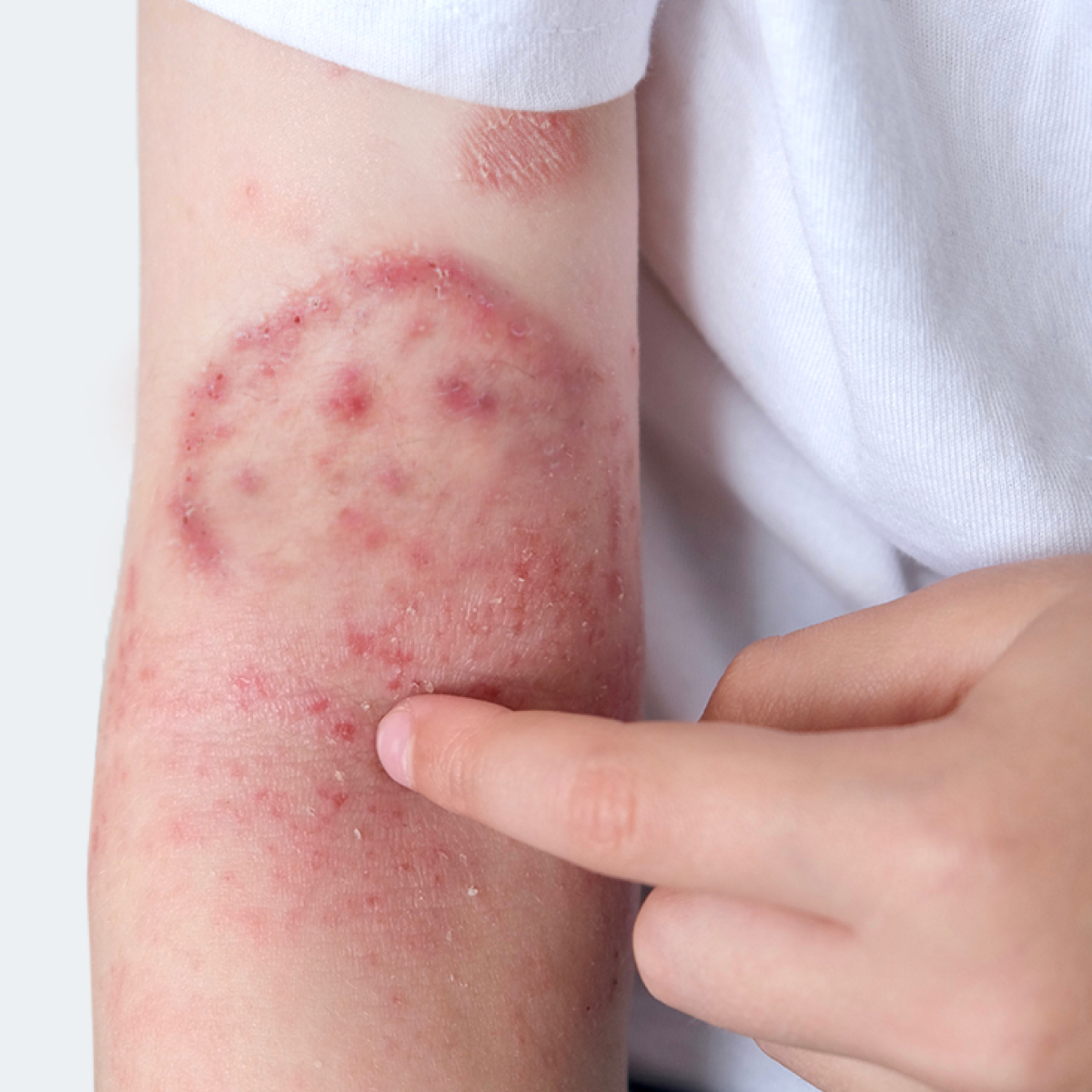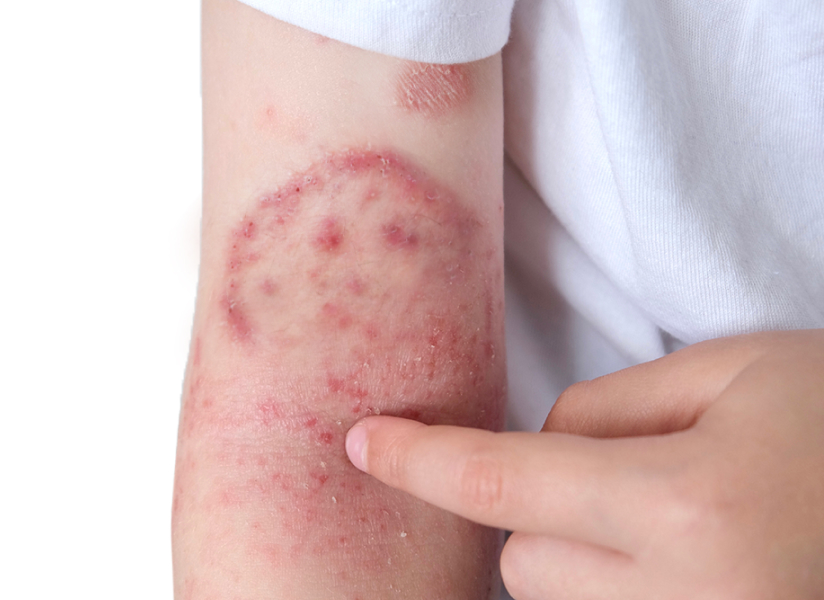Skin Infection Treatment by
Skin infection can present in many different forms and diagnosis can be tricky at times. Dr. Wong Soon Tee is a MOH accredited Dermatologist for more than 30 years. Consult Dr. Wong for accurate diagnosis & effective treatment.
Why Choose Dr. Wong Soon Tee
Friendly & Experienced Specialist
Dr. Wong connects well with his patients & he is a specialist with over 30 years of experience.
Dedicated & Focused Patient Care
Dr. Wong will manage every step of his patient’s skin healing journey.
Safe & Effective Treatments
We offer a selection of carefully curated FDA & HSA-approved treatments that give effective results.
- MBBS, Yong Loo Lin School of Medicine, Singapore
- MRCP. Member of Royal College of Physicians, United Kingdom
- FAMS, Fellow of Academy of Medicine, Singapore
- Adjunct Assistant Professor, National University of Singapore
- Visiting Consultant, University Dermatology Division, National University Hospital
- Visiting Consultant, Aesthetic Plastic Surgery Centre, National University Hospital

Skin infection can present in various forms as follow:
White Spots
White Spots are caused by fungal infection of the skin under certain conditions, such as increased warmth and moist environment. Typically it occurs on the body, upper arms and thighs, appearing slightly scaly and white. It can also appear as brown or salmon pink patches. These patches usually do not have any symptoms, but they can be itchy at times, especially with sweating.
White spots are generally treated with an antifungal cream or lotion. In severe cases and when creams or lotions are ineffective, oral medication may be used.
Ringworm
This is a fungal infection of the skin that is characterized by scaly, reddish, “ring-shaped patches” often forming complete rings with raised borders.
Accurate diagnosis is important and treatment with antifungal medication usually will solve the problem. But recurrence is common!
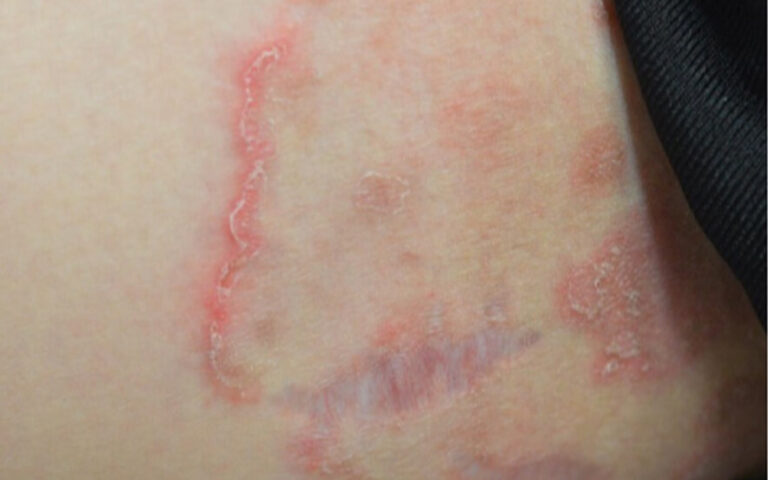
Athlete’s Foot
This is a fungal infection of the skin of the feet. Athlete’s feet normally begin as scaling and cracking. As the infection worsens, softening of the skin, redness, itchiness and foul-smelling odor occurs.
Athletes are particularly prone to catch this infection because of persistently moist feet due to heavy sweating and tight-fitting shoes. Anti-fungal treatment is effective in treating this condition.
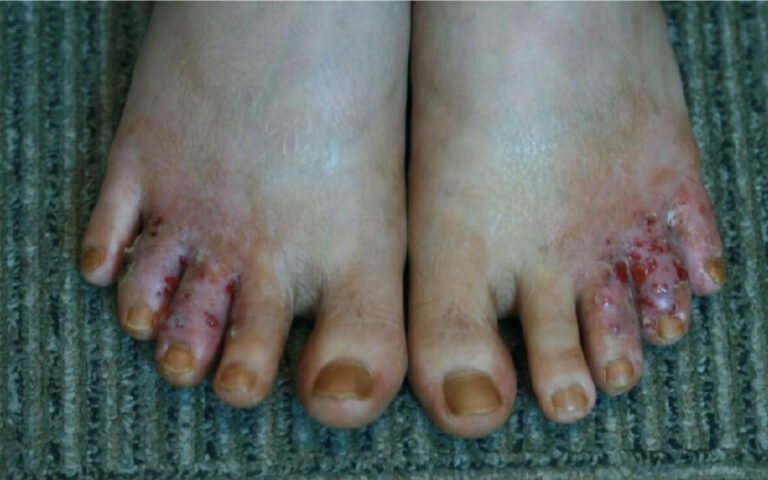
Boil
This is an inflamed and pus-filled area of the skin that looks like an oversized pimple. They can develop anywhere on the body, but predominantly in areas like the armpit, breasts, buttocks, face, genitals and neck. It often occurs through infection of a hair follicle. The pus that collects contains bacteria and is highly infectious.
Boils normally rupture on their own. Alternatively, consult a dermatologist to drain the pus and cover the area with a dressing. A course of oral or intravenous antibiotics is usually needed to treat the infection effectively.
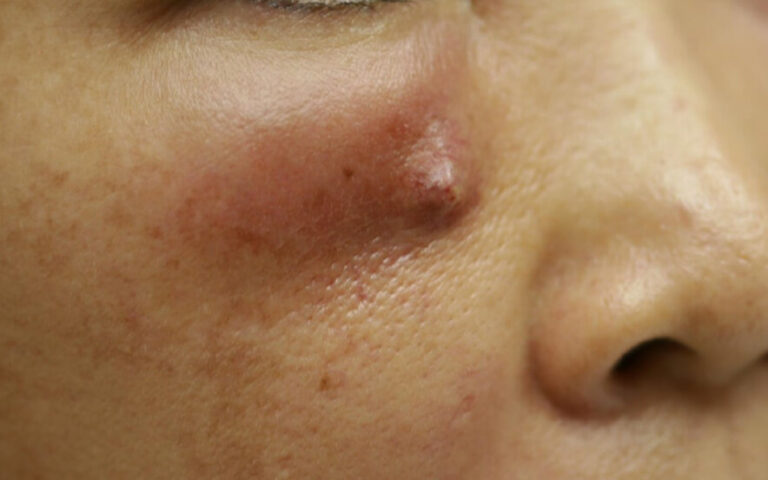
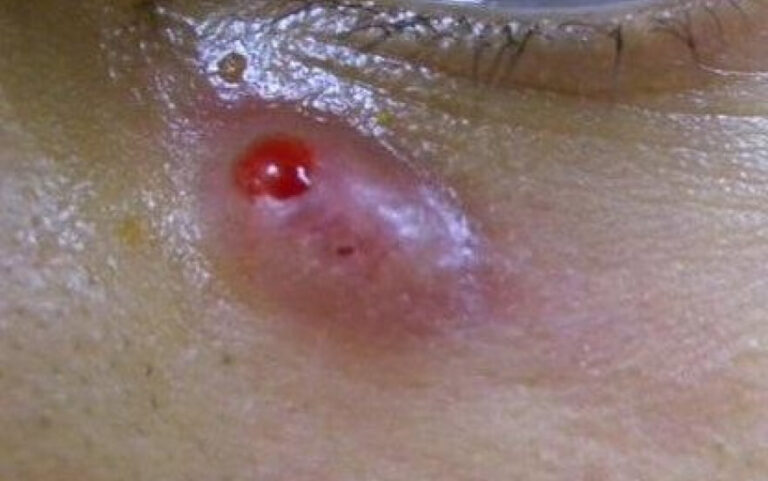
Impetigo
Impetigo usually appears as yellowish-brown crusted sore around the nose, mouth, hands and forearms in young children. This is a contagious superficial skin infection. Diagnosis is usually based on the clinical appearance of the skin lesions and confirmed by bacterial isolation swab test. Impetigo typically responds well to treatment with antibiotic cream or oral antibiotics.
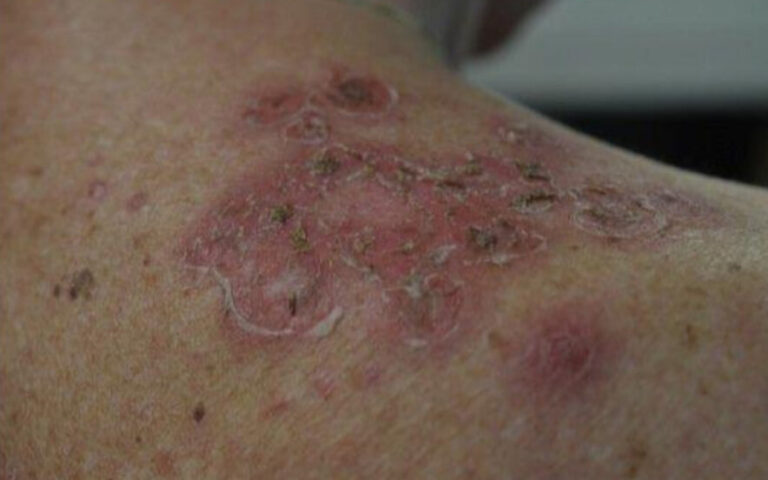
Cellulitis
Unlike impetigo, cellulitis is a deeper infection of the skin usually caused by the same bacteria. Cellulitis usually appears as an area of redness, swelling and tenderness and may be associated with fever when it is more severe and extensive. It can occur in people of any age, but it is more common in the elderly and in patients with diabetes mellitus. Cellulitis is treated with oral antibiotic or antibiotic injection.
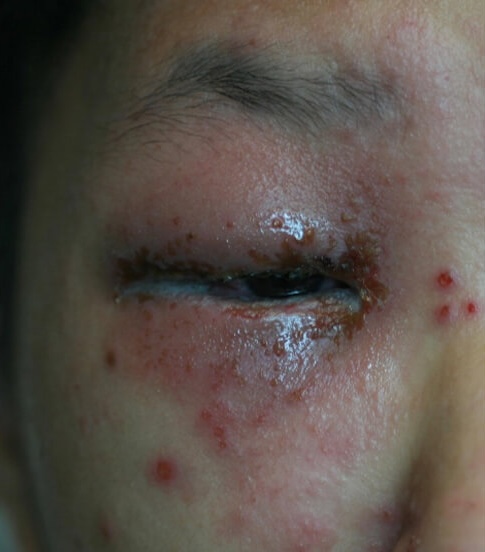
Herpes Simplex infection
Herpes Simplex virus (HSV) is a common viral infection of the skin and mucous membranes. It causes small blisters with red inflammation on the skin. Once infected, HSV will settle in the body’s nervous system and it may be reactivated at variable intervals to produce blisters at the same location. This infection responds well to prescriptive antiviral medication.
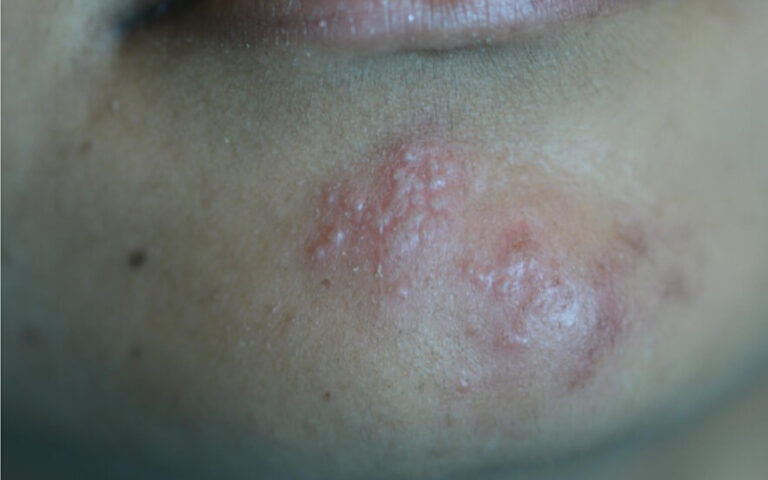
Shingles
Shingles, also known as Herpes Zoster, is a painful blistering rash caused by the varicella-zoster virus (VZV), the same virus that causes Chickenpox. After the chickenpox is cleared, the virus remains dormant in the body’s nervous system. During the shingles attack, the virus is reactivated and it travels along the nerve. It usually affects only one side of the face or body, appearing as a band of blisters following the path of the nerve. Shingles are more common in elderly patients and people who are weakened by medical treatment or disease.
Early treatment with prescription antiviral medication is important. This will minimize the nerve damage and the complication of suffering for nerve pain in the long run. To prevent shingles, a vaccine is now available for people above 50 years of age.
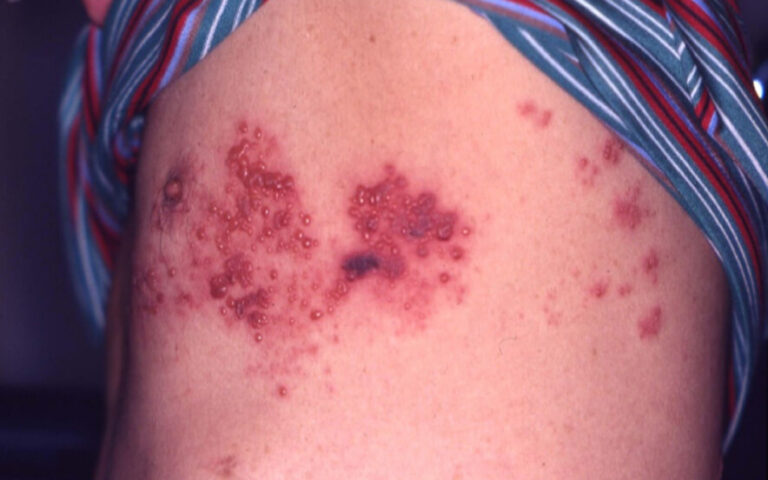
Molluscum Contagiosum
Molluscum Contagiosum is a common viral infection of the skin. It can easily spread from person to person, and by the sharing of towels or clothes. Molluscum usually appears as multiple small, flesh-colored or pink, dome-shaped skin growths with a small indentation in the center. They are often found in clusters on the skin.
They often occur in young children, especially among siblings. Molluscum can also be sexually transmitted if growths are present in the genital area.
The infection will eventually resolve on its own, often without leaving a scar. Therefore, it is an option, especially with young children, not to treat, and to wait for the growths to go away on their own. However, it may take six months to five years for all of the skin growths to go away.
Treatment options include topical creams, picking with forceps and cryotherapy.
Warts
Warts are skin-colored growths, scaly and rough to the touch, but they can be also dark, flat, and smooth. They are non-cancerous skin growths caused by a viral infection in the top layer of the skin. Viruses that cause warts are called Human Papillomavirus (HPV). They are most common on the hands, feet and face but they can grow almost anywhere in the body. They are infectious and some people are more susceptible to this infection than others.
Restore Your Skin
Consult Dr. Wong for accurate diagnosis & effective treatment now. Call Assurance Skin Clinic at +65 6694 1121 for an appointment.
Our Clinic Location
-
Mount Elizabeth Novena Specialist Centre
#10-22/23, 38 Irrawaddy Road,
Singapore 329563 - +65 6694 1121
- +65 9724 4911(WhatsApp)
- enquiry@assuranceskin.com
-
Mon, Tues, Wed, Fri: 9am - 5pm
Thurs & Sat: 9am - 12.30pm
Sun & Public Holidays: Closed
Book An Appointment
Leave us your details and our clinic will get back to you shortly.
For Faster Response, Call Us!
+65 6694 1121
Chat with our friendly clinic staff through Whatsapp!
